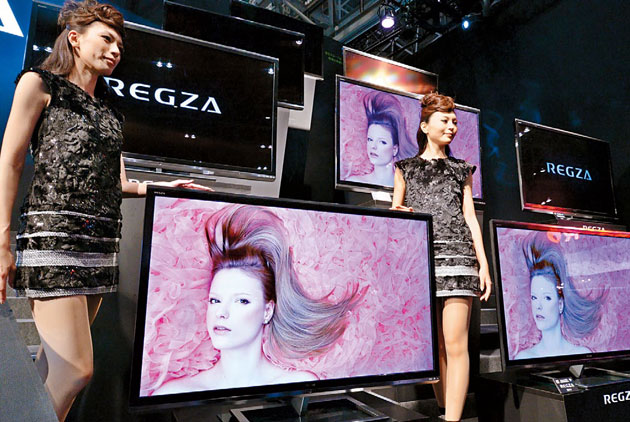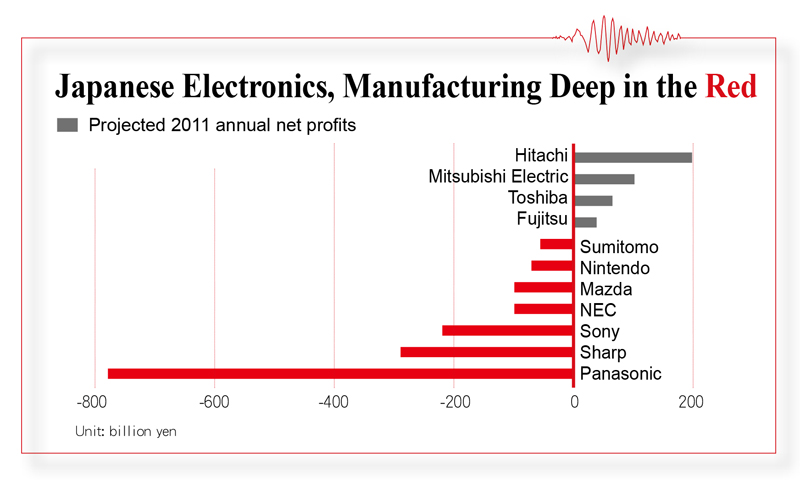Japan's Home Electronics Industry:
The Last Samurai?

Source:CW
From world-beater to faded glory, Japan's home electronics industry has come to an existential crossroads, and like fallen nobility maintains its sleek, shiny exterior, awaiting some nebulous shot at a future comeback.
Views
The Last Samurai?
By Yunfang TaoFrom CommonWealth Magazine (vol. 491 )
If a vote were to be held to decide which nation's national fortunes were the most tragic last year, you'd be hard pressed to compete with the woes of Japan.
Throughout a half century of ceaseless technological innovation and introduction of new products, the Japanese electrical appliance industry swept the world and, together with the car industry, served as the locomotive of Japanese post-War economic growth.
Once upon a time, Japanese companies were buying up New York's Rockefeller Center and Hollywood movie studios at the drop of a hat. When you thought of TV sets, the globally recognized brand of Sony would certainly come to mind, seemingly symbolic of Japanese national strength – rich, powerful, and appealing.
Today, two decades after the bubble burst and on the heels of epic natural disaster, Japan's economy is wounded. The once world-beating home electronics industry, a bedrock industry for 50 years, is now a shell of its former self, having slid into its present moribund state over the past several years.
Japan's eight major electrical appliance manufacturers recently published their financial reports from last year, and all showed declining business performance. Hitachi, Mitsubishi and Toshiba had long since carried out reorganization plans that took them out of television set manufacturing and, despite a decline in earnings, at least managed to keep a profit on the books.
More surprisingly, the three major consumer electronics marquees – Sony, Panasonic and Sharp – last year suffered collective losses of $1.3 trillion yen. (See Table)

In contrast, South Korea's Samsung Group last year reported consolidated net profit of $960 billion yen. For the fourth quarter Apple reported consolidated net profit of around $990 billion yen. The contrast is staggering.
With Apple leading the pack in innovation, and with Samsung's low-cost manufacturing capturing a near 36-percent share of the market for LCD television sets, Japan has come out on the short end in currency exchange and price wars. Flagship product development is also falling behind and, facing strong challenges from South Korea, Taiwan and China, there is little with which to fight back.
Following the financial crisis, the three major home electronics giants swung into action, struggling to pull themselves together. Sony axed half of its production lines; Sharp made a massive investment in a state-of-the-art LCD flat-screen panel manufacturing plant, and Panasonic acquired Sanyo Electric Co., Ltd., reasoning that growth in its solar cell panel business would help offset declines elsewhere.
But the outcomes of those endeavors were brutal. Prices of small- and medium-sized LCD flat panel displays spiraled downward, while market demand and retail prices for television sets continued to contract. This has resulted in the grim scenario of "the more you sell, the more money you lose." Ultimately, their corporate losses were the largest in history.
Another element considered a factor in the decline of Japan's home electronics business has been the vertically-integrated business model of the three big players, which demands all components and finished products be produced in-house, and cannot compete with the low-cost production advantages of a horizontal division of labor.
American business management guru Jim Collins has posited his "five stages of decline," the final two of which are "grasping for salvation/finding the silver bullet" and "capitulation to irrelevance or death."
Era as ‘Home Electronics King' Over
It cannot be left unsaid that Japan's once flourishing home electronics industry has gradually fallen onto hard times and slid into irrelevance. The curtain has already fallen on its era as "home electronics king."
Japanese home electronics companies are also becoming aware that they'll have to focus their resources toward developing new businesses with growth potential as their path to survival.
Kazuo "Kaz" Hirai, who will take over as president and CEO of Sony on April 1, has boldly declared his intention to carry out painful reforms, and to eliminate unprofitable ventures without hesitation.
But Sony adamantly refuses to give up making televisions.
Despite eight consecutive years of losses from its TV set manufacturing business, Hirai remains convinced that TVs are a vital product and has no plans to pull out. The company may move forward in the future by acquiring a competitor or through OEM contract manufacturing.
As for his determination to turn Sony's television set business from loss to profit by 2013, "that hasn't changed," Hirai says.
Additionally, Sony intends to expand its business domain into the area of high-end medical equipment, with plans to acquire Olympus' medical equipment division. Cameras, games and mobile devices will also be future big-ticket investment items. Hirai says Sony is going on a war footing, and plans to fully integrate its product line and "connect the dots" through comprehensive Internet marketing.
Outside observers have criticized Panasonic for its acquisition of Sanyo, a move that was intended to stop the company's hemorrhaging of funds, but only proved to be another money pit when the solar cell market contracted. Panasonic president Fumio Ohtsubo, however, optimistically believes the initial policy decision was correct. "At least we still have that expectation," he says.
Panasonic will boost the ratio of its investments in energy-saving appliances for home and business use, solar cells and other green businesses, as well as its medical and fitness equipment.
As for Sharp, which blazed the trail back in 1999 with the first LCD flat-screen TV, it intends to bank on its controlling advantage in the market for super-sized LCD flat panel televisions over 60 inches to take a bite of the North American market.
Hitachi, Toshiba and Mitsubishi, all of which remained in the black according to last year's financial reports, intend to shift their focus from home electronics to basic social infrastructure construction.
Hitachi President Hiroaki Nakanishi notes the global bullishness on "intelligent cities" and "smart grids," and Hitachi intends to revamp its organization to target this business in boosting social infrastructure construction.
Toshiba and Mitsubishi also plan big efforts in the infrastructure construction markets of newly emerging economies.
The two Japanese films Japan Sinks and Aegis share a common plot arc: a hero emerges at the end to defuse the crisis. Japan's home electronics industry is also waiting for the day when it, too, can emerge as a hero.
Translated from the Chinese by Brian Kennedy






